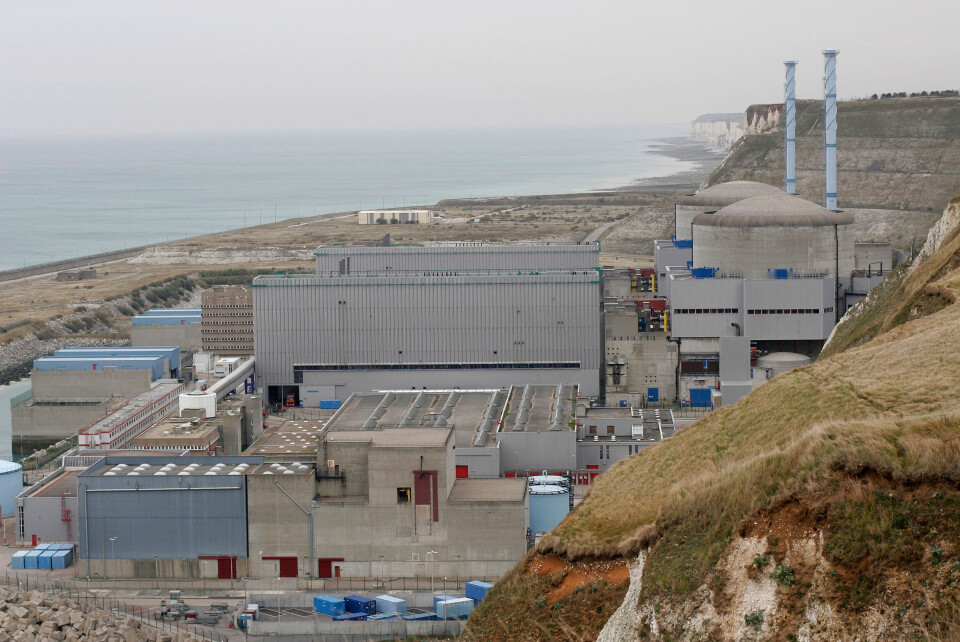-
White storks make strong return in France via nest ‘platforms’ and clipped wings
The Ligue pour la Protection des Oiseaux shares the conservation challenges in saving these birds from extinction
-
Hosting scheme in south-west France lets newcomers sample lifestyle
Households in nine Dordogne communes volunteer under Mes Nouveaux Voisins scheme
-
French boulangeries demand right for staff to work on May 1 so they can open
Artisan bakery owners can work but employees cannot, while certain industrial bakeries are allowed to remain open with workers
France cuts red tape for nuclear power despite cracks in reactors
The latest serious fault – a crack measuring 155mm long – was discovered at a plant in Normandy

The construction time for new nuclear reactors could be reduced by at least two years thanks to a new bill that simplifies administrative procedures and planning documents.
The legislation was approved by parliament in May and the government hailed an environmental step forward.
It also removes the current 50% cap on nuclear power’s share of France’s electricity mix and introduces tougher penalties for people who illegally enter a nuclear power plant.
It has been a difficult few months for France’s nuclear industry after a large crack was discovered in March in a pipe that forms part of an emergency cooling circuit at a nuclear reactor near Dieppe, in Normandy.
Read more: ‘A particularly deep crack’: Alarm raised over French nuclear plant
Read more: Crack discovered at another French nuclear plant
The fault, at the Penly site, was identified while the plant was shut down for routine maintenance and checks for cracks – a problem that has plagued EDF reactors for 18 months.
It had recently invested in an emergency programme to repair them, which involved 100 specialist welders from the US.
The work had been deemed a success and feared power cuts over the winter were avoided.
Most of the cracks discovered so far have been no more than a couple of millimetres deep in the 27mm-thick pipes.
The crack at Penly, however, is 155mm long – a quarter of the circumference of the pipe – with a maximum depth of 23mm.
It means that if the circuit was ever used in an emergency, the pipe, holding mildly radioactive hot water under 50 bars of pressure, would be at risk of leaking.
Experts said that, in such a case, radiation would have been kept within the perimeter of the building and there was no risk to the public.
However, the nuclear safety regulator ASN said the crack classified as a Level 2 incident – Level 5 being the most serious – and ordered EDF to carry out an accelerated inspection and repair programme.
Further checks revealed another two cracks at French power plants, albeit less serious.
One was in the second Penly reactor and measured 57mm long and 12mm deep.
The other was at Cattenom in Moselle and measured 165mm long and 4mm deep.
Penly was commissioned in 1990 and feeds, on average, about 18 billion kilowatt-hours per year into the public grid – about 80% of the annual consumption of Normandy.
EDF said its investigation showed the cracked weld had been badly repaired twice during the plant’s construction, with pipes forced into position.
Penly was one of the last reactors built using a so-called P4 design.
There are two pairs of P4 reactors at the power stations of Nogent-sur-Seine (Aube) and Belleville-sur-Loire (Cher), and one each at Cattenom (Moselle) and Golfech (Tarn-et-Garonne), all of which are now under close inspection.
Related articles
MAP: Where are the six new nuclear reactors planned for in France?
‘Macron’s nuclear power push is high-risk and high-reward for France’
























